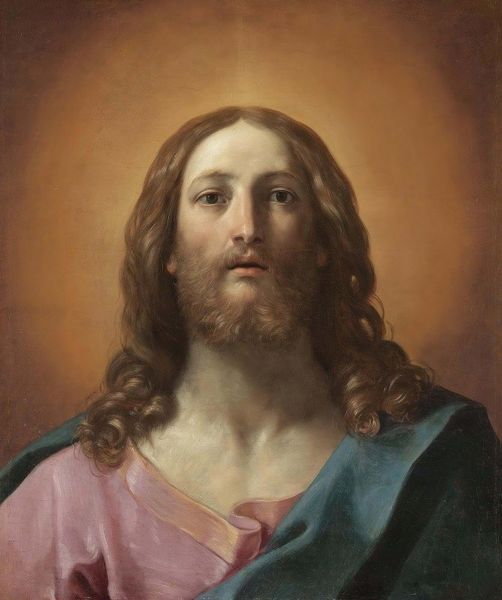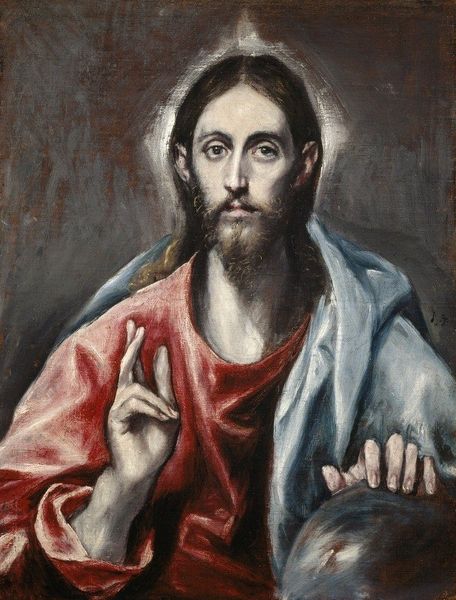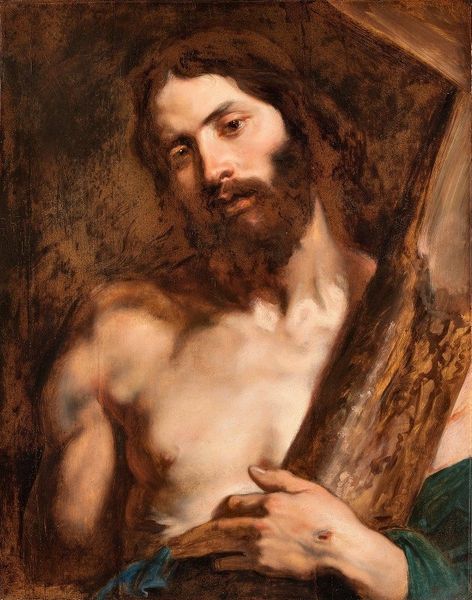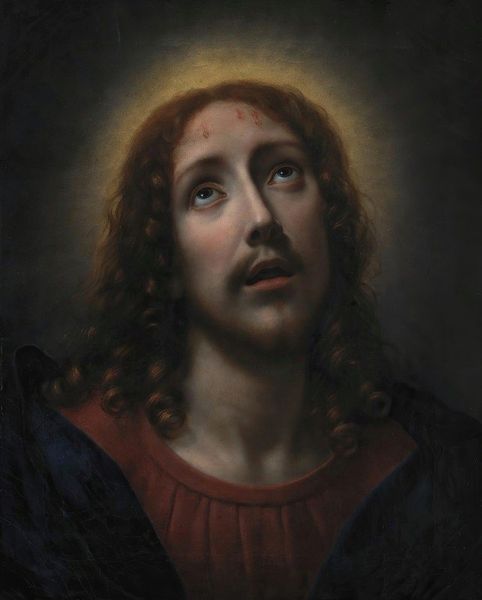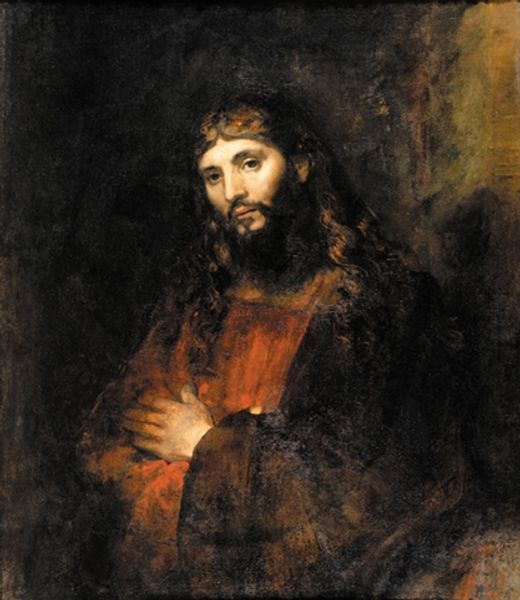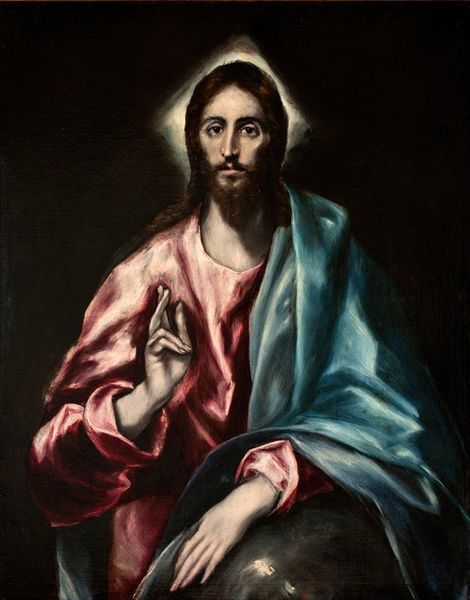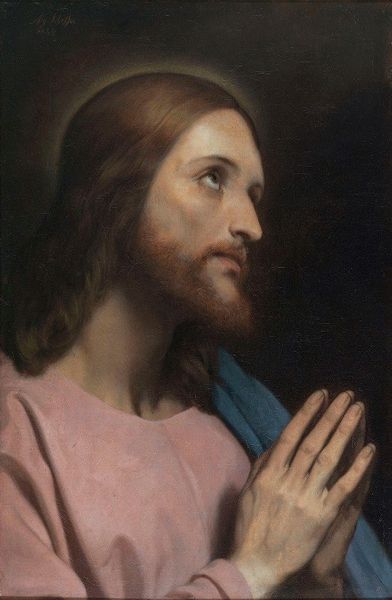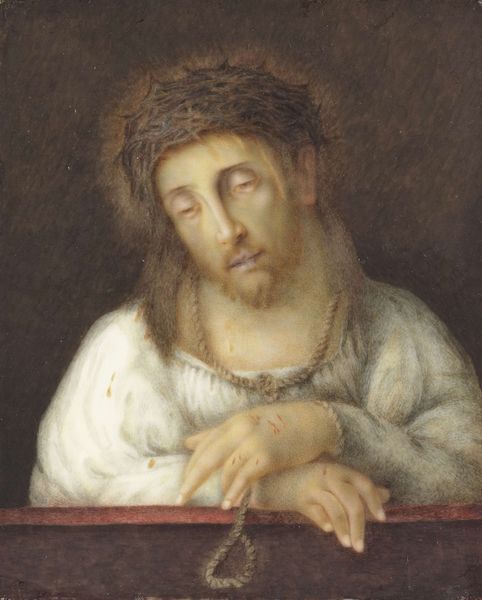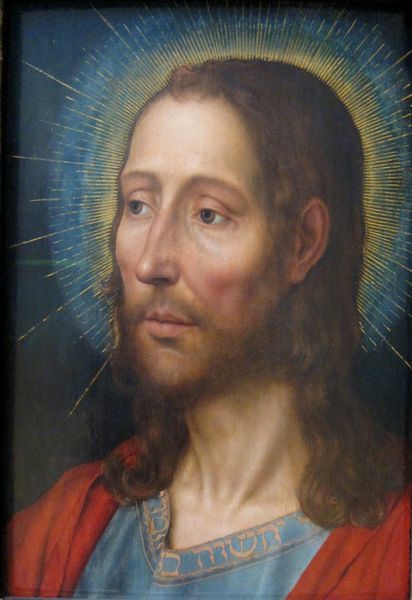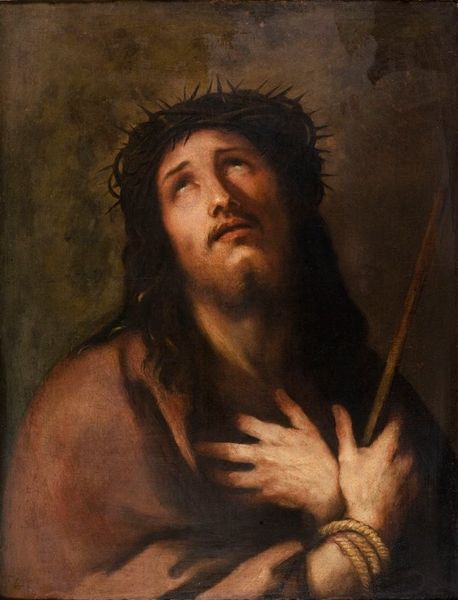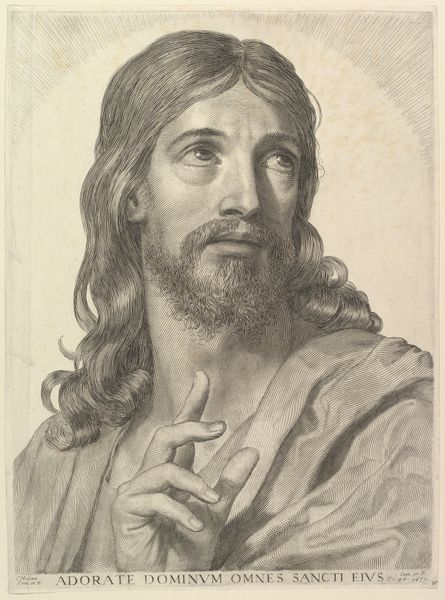
painting, oil-paint
#
portrait
#
portrait
#
painting
#
oil-paint
#
mannerism
#
chiaroscuro
#
history-painting
Copyright: Public Domain: Artvee
Editor: Here we have El Greco's "Christ in Prayer," painted sometime between 1595 and 1597, done with oil paints. What strikes me is the upward gaze and the dramatic lighting - it feels incredibly theatrical. How do you see this piece interacting with its historical and cultural context? Curator: That upward gaze, and indeed the entire composition, exists in dialogue with the Mannerist style dominant at the time. But Mannerism, especially in Spain during the Counter-Reformation, was about more than just aesthetic flair. Editor: More than style? What do you mean? Curator: Think about the sociopolitical pressures shaping art at this moment. The Council of Trent dictated that art should be clear, emotionally persuasive, and doctrinally correct. El Greco, who immigrated to Spain, had to conform to those expectations to get commissions. It couldn't just be beautiful, it had to speak to a religious agenda. Editor: So the intense emotion and piety served a specific purpose within the institution of the Church? Curator: Precisely! It was a public declaration of faith during a period of intense religious and political turmoil. El Greco successfully blends personal style with the demands of his patrons, a tightrope walk if there ever was one! Do you think this resonates differently today outside of that religious frame? Editor: Definitely. The expressiveness transcends the religious context; the anguish feels very human. It makes you wonder how much of that tension was inherent in the commission itself! Curator: Exactly! Recognizing that institutional influence is critical. Thanks for sharing these sharp reflections.
Comments
No comments
Be the first to comment and join the conversation on the ultimate creative platform.
